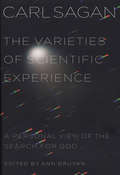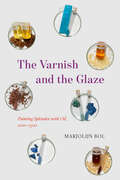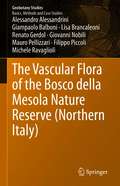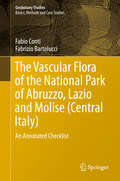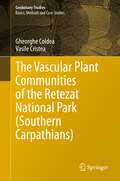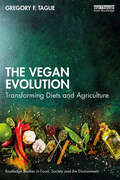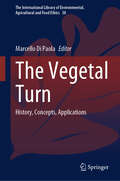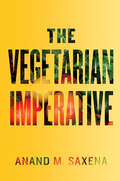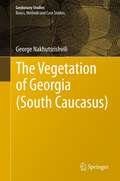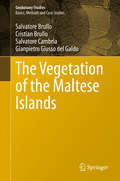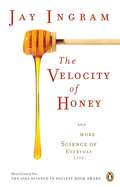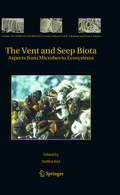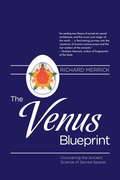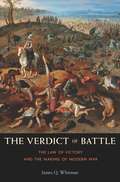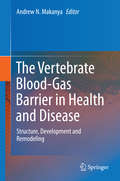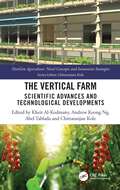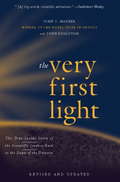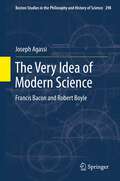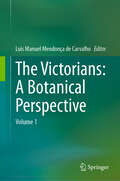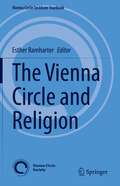- Table View
- List View
The Varieties of Religious Experience
by William JamesIn The Varieties of Religious Experience: A Study in Human Nature, Dr. William James takes aim at the nature of religion from a scientific/academic point of view-something that had, until this landmark work, been sorely missed. James believed that the study of the origin of an object or concept should not play a role in the study of its value. As an example, he alluded to the Quaker religion and its founder, George Fox. Many scientists immediately reject all aspects of the Quaker religion because evidence suggests that Fox was schizophrenic. Calling this rejection medical materialism, he insisted that the origin of Fox's notions about religion should not be considered when placing a value on them. He pointed out that many believed El Greco to have suffered from astigmatism, yet no one would dismiss his art based on this medical detail. "Scientific theories are organically conditioned just as much as religious emotions are; and if we only knew the facts intimately enough, we should doubtless see 'the liver' determining the dicta of the sturdy atheist as decisively as it does those of the Methodist under conviction anxious about his soul. When it alters in one way the blood that percolates it, we get the Methodist, when in another way, we get the atheist form of mind."- Dr. William James
The Varieties of Scientific Experience
by Carl Sagan Ann DruyanCarl Sagan's prophetic vision of the tragic resurgence of fundamentalism and the hope-filled potential of the next great development in human spirituality The late great astronomer and astrophysicist describes his personal search to understand the nature of the sacred in the vastness of the cosmos. Exhibiting a breadth of intellect nothing short of astounding, Sagan presents his views on a wide range of topics, including the likelihood of intelligent life on other planets, creationism and so-called intelligent design, and a new concept of science as "informed worship." Originally presented at the centennial celebration of the famous Gifford Lectures in Scotland in 1985 but never published, this book offers a unique encounter with one of the most remarkable minds of the twentieth century.
The Varieties of Scientific Experience: A Personal View of the Search for God
by Carl Sagan Ann DruyanCarl Sagan's prophetic vision of the tragic resurgence of fundamentalism and the hope-filled potential of the next great development in human spirituality <P> The late great astronomer and astrophysicist describes his personal search to understand the nature of the sacred in the vastness of the cosmos. Exhibiting a breadth of intellect nothing short of astounding, Sagan presents his views on a wide range of topics, including the likelihood of intelligent life on other planets, creationism and so-called intelligent design, and a new concept of science as "informed worship." Originally presented at the centennial celebration of the famous Gifford Lectures in Scotland in 1985 but never published, this book offers a unique encounter with one of the most remarkable minds of the twentieth century.
The Varnish and the Glaze: Painting Splendor with Oil, 1100–1500
by Marjolijn BolA new history of the techniques, materials, and aesthetic ambitions that gave rise to the radiant verisimilitude of Jan van Eyck’s oil paintings on panel. Panel painters in both the middle ages and the fifteenth century created works that evoke the luster of precious stones, the sheen of polished gold and silver, and the colorful radiance of stained glass. Yet their approaches to rendering these materials were markedly different. Marjolijn Bol explores some of the reasons behind this radical transformation by telling the history of the two oil painting techniques used to depict everything that glistens and glows—varnish and glaze. For more than a century after his death, the fifteenth-century painter Jan van Eyck was widely credited with inventing varnish and oil paint, on account of his unique visual realism. Once this was revealed to be a myth, the verisimilitude of his work was attributed instead to a new translucent painting technique: the glaze. Today, most theories about how Van Eyck achieved this realism revolve around the idea that he was the first to discover or refine the glazing technique. Bol, however, argues that, rather than being a fifteenth-century refinement, varnishing and glazing began centuries before. Drawing from an extensive body of recipes, Bol pieces together how varnishes and glazes were first developed as part of the medieval art of material mimesis. Artisans embellished metalwork and wood with varnishes and glazes to imitate gold and gems; infused rock crystal with oil, resin, and colorants to imitate more precious minerals; and oiled parchment to transform it into the appearance of green glass. Likewise, medieval panel painters used varnishes and glazes to create the look of enamel, silk, and more. The explorations of materials and their optical properties by these artists stimulated natural philosophers to come up with theories about transparent and translucent materials produced by the earth. Natural historians, influenced by medieval artists’ understanding of refraction and reflection, developed theories about gems, their creation, and their optical qualities.
The Vascular Flora of the Bosco della Mesola Nature Reserve (Geobotany Studies)
by Alessandro Alessandrini Giampaolo Balboni Lisa Brancaleoni Renato Gerdol Giovanni Nobili Mauro Pellizzari Filippo Piccoli Michele RavaglioliThe Bosco della Mesola represents one of the few remnants of coastal woodlands in Italy. A nature reserve was established in this area in 1977. No detailed checklists of the vascular flora of the nature reserve have been compiled since then. So, there was an urgent need to fill this gap. This book contains a critical updated checklist of the vascular flora in the Bosco della Mesola Nature Reserve. It also allows quantitative comparisons with a previous checklist dating back to the 1960s in order to detect temporal changes in the vascular flora over 60 years. We believe that this book represents a milestone for scientists and all people involved in nature conservation and management in this area and in similar territories in other countries. The readerships can also include high-school students and non-professional botany amateurs.
The Vascular Flora of the National Park of Abruzzo, Lazio and Molise (Central Italy)
by Fabio Conti Fabrizio BartolucciThis book provides an updated list of the vascular flora of the National Park of Abruzzo, Lazio and Molise, incorporating the latest nomenclatural and floristic findings. The list of plants was extrapolated from a geographic database including all data from floristic or vegetational references and herbarium specimens concerning the Park area. This data storage tool was obtained from the database of Abruzzo vascular flora (Conti et al. 2010) and adapted to the study area by adding those areas of the Park falling in the regions of Lazio and Molise and their accompanying floristic and vegetational data. Analysis of the data has allowed gaps in the floristic knowledge of the Park, such as comparatively or completely unexplored areas, to be identified, together with those species records that still require confirmation and/or further study. On the basis of these deductions, fieldwork aimed at the collection of new floristic data was carried out. Verification of the correct identification of herbarium specimens collected in the past, as well as a systematic study of critical genera, were also important priorities.
The Vascular Plant Communities of the Retezat National Park (Geobotany Studies)
by Gheorghe Coldea Vasile CristeaThe floristic studies carried out during the 19th and 20th centuries in the Retezat Massif identified 1,152 plant species and 104 subspecies within the Cormobionta sub-regnum. Of these, about 12% are endemic Carpathian and Dacian-Balkan taxa that induce a regional specificity to the hosting communities. The phytocoenological research led to the description of 67 plant associations, grouped in 28 alliances, 19 orders and 13 vegetation classes. These classes are: Asplenietea trichomanis, Thlaspietea rotundifolii, Salicetea herbaceae, Montio-Cardaminetea, Scheuchzerio-Caricetea fuscae, Oxycocco-Sphagnetea, Molinio-Arrhenatheretea, Caricetea curvulae, Loisleurio-Vaccinietea, Elyno-Seslerietea, Mulgedio-Aconitetea, Carpino-Fagetea and Vaccinio-Piceetea. The following plant associations herein described are new syntaxa: Phyteumo confusi-Junicetum trifidi, Salici kitaibelianae-Dryadetum octopetalae and Aconito taurici-Rumicetum alpine. For the protection of some rare plant species and vulnerable plant associations, two natural reserves are proposed to be created within the “Limestone Retezat” area.
The Vegan Evolution: Transforming Diets and Agriculture (Routledge Studies in Food, Society and the Environment)
by Gregory F. TagueArguing for a vegan economy, this book explains how we can and should alter our eating habits away from meat and dairy through sociocultural evolution. Using the latest research and ideas about the cultural ecology of food, this book makes the case that through biological and, especially, cultural evolution, the human diet can gravitate away from farmed meat and dairy products. The thrust of the writing demonstrates that because humans are a cultural species, and since we are evolving more culturally than biologically, it stands to reason for health and environmental reasons that we develop a vegan economy. The book shows that for many good reasons we don’t need a diet of meat and dairy and a call is made to legislative leaders, policy makers, and educators to shift away from animal farming and inform people about the advantages of a vegan culture. The bottom line is that we have to start thinking collectively about smarter ways of growing and processing plant foods, not farming animals as food, to generate good consequences for health, the environment, and, therefore, animals. This is an attainable and worthy goal given the mental and physical plasticity of humans through cooperative cultural evolution. This book is essential reading for all interested in veganism, whether for ethical, environmental, or health reasons, and those studying the human diet from a range of disciplines, including cultural evolution, food ecology, animal ethics, food and nutrition, and evolutionary studies.
The Vegetal Turn: History, Concepts, Applications (The International Library of Environmental, Agricultural and Food Ethics #38)
by Marcello Di PaolaThis book charts the multidimensional course of what has come to be known as the “Vegetal Turn” in environmental humanities - a wave of theoretical and practical interest in the complexities and peculiarities of plant life and plant-human relations. The vegetal turn consists of increasingly sophisticated, inter- and trans-disciplinary, inter- and trans-cultural explorations of the multiple systems and networks of communication, intelligence, technical-operational capabilities, and relations articulated by and via plants - as well as the ethical, economic, cultural, and political dimensions of plant-human interactions and practices. The volume includes contributions from philosophy and the humanities more generally that explore and reflect on the history, prospects, and applications of four main themes that the Vegetal Turn has brought to general attention: the mind of plants, and what their peculiar mentality can tell us about mind more generally; plant personhood and/or moral standing, and the justifications and implications of attributions thereof; plant relationships with humans, plant-based human relationships, and the ethics of human practices with or regarding plants - from agriculture to the arts, from forest management to urban design ; as well as the rights and/or political representation of plant life and the other life-forms that depend on it, human as well as non-human, present and future.
The Vegetarian Imperative
by Anand M. SaxenaWe have learned not to take food seriously: we eat as much as we want of what we want when we want it, and we seldom think about the health and environmental consequences of our choices. But the fact is that every choice we make has an impact on our health and on the environment. In The Vegetarian Imperative, Anand M. Saxena, a scientist and a vegetarian for most of his life, explains why we need to make better choices: for better health, to eliminate world hunger, and, ultimately, to save the planet. Our insatiable appetite for animal-based foods contributes directly to high rates of chronic diseases—resulting in both illness and death. It also leads to a devastating overuse of natural resources that dangerously depletes the food available for human consumption. The burgeoning population and increasing preference for meat in all parts of the world are stretching planetary resources beyond their limits, and the huge livestock industry is degrading the agricultural land and polluting air and water.Continuing at this pace will bring us to the crisis point in just a few decades—a reality that threatens not only our current lifestyle but our very survival. This book shows us a way out of this dangerous and vicious cycle, recommending a much-needed shift to a diet of properly chosen plant-based foods.Any one of these arguments alone—personal health, worldwide hunger, and environmental degradation—provides reason enough to stop consuming so much animal-based food; taken together, they make an unassailable case for vegetarianism. The Vegetarian Imperative will make you rethink what you eat—and help you save the planet.
The Vegetation of Antarctica through Geological Time
by David J. Cantrill Imogen PooleThe fossil history of plant life in Antarctica is central to our understanding of the evolution of vegetation through geological time and also plays a key role in reconstructing past configurations of the continents and associated climatic conditions. This book provides the only detailed overview of the development of Antarctic vegetation from the Devonian period to the present day, presenting Earth scientists with valuable insights into the break up of the ancient supercontinent of Gondwana. Details of specific floras and ecosystems are provided within the context of changing geological, geographical and environmental conditions, alongside comparisons with contemporaneous and modern ecosystems. The authors demonstrate how palaeobotany contributes to our understanding of the palaeoenvironmental changes in the southern hemisphere during this period of Earth history. The book is a complete and up-to-date reference for researchers and students in Antarctic palaeobotany and terrestrial palaeoecology.
The Vegetation of Georgia (South Caucasus)
by George NakhutsrishviliThe book describes richness and diversity of Georgia's vegetation. Contrasting ecosystems coexist on the relatively small territory of the country and include semi-deserts in East Georgia, Colchic forests with almost sub-tropical climate in West Georgia and subnival plant communities in high mountains. West Georgia lacks xerophilous vegetation zone and mesophilous forest vegetation spreads from the sea level to subalpine zone. The Colchic refugium (West Georgia) ensured survival of the Tertiary's mesophilous forest flora. Vertical profile of the vegetation is more complex in East Georgia with semi-desert, steppe and arid open forest zone. In South Georgia the montane zone represented by montane steppe is devoid of forests
The Vegetation of the Maltese Islands (Geobotany Studies)
by Salvatore Brullo Cristian Brullo Salvatore Cambria Gianpietro Giusso del GaldoThis book discusses the remarkable plant diversity of the Maltese Archipelago. Despite its relatively small area and long-term human exploitation, many different plant communities occur in this territory. The book presents phytosociological investigations, together with taxonomical studies, which have been conducted over more than forty years, highlighting the unique features of this central Mediterranean insular ecosystem. It also describes the phytosociological role played by several narrow endemic or phytogeographically relevant taxa and introduces many phytocoenoses exclusively growing in the archipelago. The study integrates the palaeogeographic issues linked to the ancient and intriguing history of the different civilizations that succeeded on the islands for thousands of years. The book also focuses on the N2000 habitats.
The Velocity of Honey
by Jay IngramAlways witty and stimulating and to the point, Jay Ingram's essays are modelsf their kind, revealing again and again the fascination that can be foundeneath the surface of everyday life if we just pause to consider theignificance of objects and phenomena that we normally take completely forranted.
The Vent and Seep Biota
by Steffen KielOases of life around black smokers and hydrocarbon seeps in the deep-sea were among the most surprising scientific discoveries of the past three decades. These ecosystems are dominated by animals having symbiotic relationships with chemoautotrophic bacteria. Their study developed into an international, interdisciplinary venture where scientists develop new technologies to work in some of the most extreme places on Earth. This book highlights discoveries, developments, and advances made during the past 10 years, including remarkable cases of host-symbiont coevolution, worms living on frozen methane, and a fossil record providing insights into the dynamic history of these ecosystems since the Paleozoic.
The Venus Blueprint
by Richard MerrickIn 2010, Richard Merrick took a family trip to Scotland's Rosslyn chapel--the enigmatic fifteenth-century temple made famous by Dan Brown's The Da Vinci Code. Little did he know he was about to embark upon an intellectual and personal journey that would lead to the discovery of a real-life lost symbol--one that reveals the connection between the world's most sacred temples and opens up a treasure trove of lost science and ancient secrets. The symbol he discovers--the Venus Blueprint--is based on that planet's orbital pattern, which takes the shape of a five-pointed star when seen from Earth. As Merrick digs deeper, he realizes the Venus Blueprint was an integral part of the design template of some of the most significant religious architecture around the world--including St. Peter's Basilica in the Vatican, the Roman Pantheon, the Greek Parthenon, the Temple of Jerusalem, and the Great Pyramid of Giza, as well as many buildings designed by the secretive Freemason society. Upon further examination, Merrick is astounded to discover that temples designed using the Venus Blueprint are endowed with extraordinary acoustics that, when supplied with the right tones and frequencies, are capable of harmonizing with Earth's resonant frequencies and evoking altered states of consciousness. He then proposes a fascinating idea: Could it be that the ancients used these harmonics to enhance entheogenically induced visions--to commune with the divine and liberate the gods within? Supported by an impressive array of historical research and scientific analysis, The Venus Blueprint offers compelling evidence of an ancient lost culture that was both spiritually and scientifically advanced.
The Verdict of Battle: The Law Of Victory And The Making Of Modern War
by James Q. WhitmanToday, war is considered a last resort for resolving disagreements. But a day of staged slaughter on the battlefield was once seen as a legitimate means of settling political disputes. James Whitman argues that pitched battle was essentially a trial with a lawful verdict. And when this contained form of battle ceased to exist, the law of victory gave way to the rule of unbridled force. The Verdict of Battle explains why the ritualized violence of the past was more effective than modern warfare in bringing carnage to an end, and why humanitarian laws that cling to a notion of war as evil have led to longer, more barbaric conflicts. Belief that sovereigns could, by rights, wage war for profit made the eighteenth century battle’s golden age. A pitched battle was understood as a kind of legal proceeding in which both sides agreed to be bound by the result. To the victor went the spoils, including the fate of kingdoms. But with the nineteenth-century decline of monarchical legitimacy and the rise of republican sentiment, the public no longer accepted the verdict of pitched battles. Ideology rather than politics became war’s just cause. And because modern humanitarian law provided no means for declaring a victor or dispensing spoils at the end of battle, the violence of war dragged on. The most dangerous wars, Whitman asserts in this iconoclastic tour de force, are the lawless wars we wage today to remake the world in the name of higher moral imperatives.
The Vertebrate Blood-Gas Barrier in Health and Disease
by Andrew N. MakanyaThis comprehensive volume on the blood-gas barrier (BGB) among vertebrates covers its structure and composition along with aspects of evolution, bioengineering, and morphometry. The book also discusses the embryological development of the BGB, including chronology of events and molecular control in vertebrates; modulation of the barrier function, including cyclic stretch-induced increases in alveolar epithelial permeability; mechanisms of lung vascular/epithelial permeability; transport mechanisms of the BGB, including sodium transport channels; factors affecting trans-barrier traffic of fluids, such as chronic elevation of pulmonary microvascular pressure; stress failure; regulation and repair in acute lung injury; chronic lung disease; and lung transportation. Ten authoritative chapters approach the blood-gas barrier holistically, from basic structure and development to pathology and treatment. Properties of the BGB are discussed in the earlier chapters, followed by prenatal and post-natal development and mechanisms of the healthy BGB. The latter half of the book delves into the pathology of the BGB, analyzing common afflictions and exploring options for treatment, including its alterations during lung transplantation. Intuitively structured and comprehensive, The Vertebrate Blood-Gas Barrier in Health and Disease is ideal for researchers and clinicians interested in pneumology and angiology.
The Vertical Farm: Scientific Advances and Technological Developments (Nextgen Agriculture)
by Chittaranjan Kole Kheir Al-Kodmany Andrew Keong Ng Abel TabladaAmid economic uncertainties, fluctuating oil prices, and a rising environmental consciousness, the need for sustainable and efficient food production has become dire. The Vertical Farm: Scientific Advances and Technological Developments systematically navigates the realm of vertical farming (VF), rooted in a robust, scientific foundation. Unveiling the intricate convergence of plant biology, environmental science, and agronomy, it provides a profound understanding of contemporary agriculture. The book spans lighting systems and climate control mechanisms, focusing on sustainability. From small urban initiatives to significant commercial endeavors, real-world case studies showcase VF's adaptability, scalability, and resilience. Addressing multiple challenges, the book explores economic considerations and public perceptions, recognizing their roles in fostering meaningful advancements in agricultural innovation.A volume in the Nextgen Agriculture series, this book is valuable to scientists, practitioners, and students in urban agriculture and planning, horticulture, engineering, landscape architecture, and plant/technology sciences.
The Very First Light: The True Inside Story of the Scientific Journey Back to the Dawn of the Universe
by John Boslough John MatherIn the early 1990s, a NASA-led team of scientists changed the way we view the universe. With the COBE (Cosmic Background Explorer) project, they showed that the microwave radiation that fills the universe must have come from the Big Bang-effectively proving the Big Bang theory beyond any doubt. It was one of the greatest scientific findings of our generation, perhaps of all time. In The Very First Light, John Mather, one of COBE's leaders, and science writer John Boslough tell the story of how it was achieved. A gripping tale of big money, bigger egos, tense politics, and cutting-edge engineering, The Very First Light offers a rare insider's account of the world of big science.
The Very Idea of Modern Science
by Joseph AgassiThis book is a study of the scientific revolution as a movement of amateur science. It describes the ideology of the amateur scientific societies as the philosophy of the Enlightenment Movement and their social structure and the way they made modern science such a magnificent institution. It also shows what was missing in the scientific organization of science and why it gave way to professional science in stages. In particular the book studies the contributions of Sir Francis Bacon and of the Hon. Robert Boyle to the rise of modern science. The philosophy of induction is notoriously problematic, yet its great asset is that it expressed the view of the Enlightenment Movement about science. This explains the ambivalence that we still exhibit towards Sir Francis Bacon whose radicalism and vision of pure and applied science still a major aspect of the fabric of society. Finally, the book discusses Boyle's philosophy, his agreement with and dissent from Bacon and the way he single-handedly trained a crowd of poorly educated English aristocrats and rendered them into an army of able amateur researchers.
The Vicarious Brain, Creator of Worlds
by Alain BerthozGroping around a familiar room in the dark, relearning to read after a brain injury, navigating a virtual landscape through an avatar: all are expressions of vicariance—when the brain substitutes one process or function for another. Alain Berthoz shows that this capacity allows humans to think creatively in an increasingly complex world.
The Victorians: Volume 1
by Luís Manuel Mendonça de CarvalhoThe Victorians: A Botanical Perspective, Volume 1 offers a unique re-evaluation of the Victorian Age and presents a new historiography based on plants. It examines the use of gutta-percha in the development of electrical measurements; provides a detailed history of cocoa and the forced labor in the São Tomé and Príncipe Islands; explores the beauty, imagination, and order of William and May Morris’ flowers; uncovers the world of Charles Darwin and the Victorian Botany Culture; highlights the crucial role of the Wardian Case in the global transport of plants; reveals the connection between Mid-Victorian Botany and Microscopy; offers glimpses of the colonial collections at the 1862 London Exhibition; explains how botany was connected with the development of photography; evokes the desire for a return to Nature and a simple life; and, finally, takes us on a journey through the history of violets.
The Vicuña
by Kristi Anne Stølen Mariela Borgnia Verónica Benítez Jane C. Wheeler Hugo Yacobaccio Jerry Laker Renaudeau d' Arc Nadine Desmond Mcneill Cristian Bonacic Marcelo Cassini Gabriela Lichtenstein Yanina Arzamendia Pete Goddard Bibiana Vilá Jessica Gimpel Ana Wawrzyk Javier García Gomez Iain GordonThe vicuña is one of the few success stories of wildlife conservation. The focus is now shifting from protection to sustainable use. Internationally, policy development has followed the community-based conservation paradigm, which holds that economic benefits from wildlife management practices bring greater commitment on the part of local communities to protect both the species and its habitat. This book takes the position that sustainability is not guaranteed by sustainable use, and that both education and regulation are required to prevent the proliferation of unsustainable practices. The research from the countries presented in this book demonstrate the animal welfare, ecological, economic, social, and conservation trade-offs, which exist between different management systems. This links economics, social and conservation research to provide a unique insight into the viability of community-based wildlife management of a species which until recently was viewed simply as a conservation priority.
The Vienna Circle and Religion (Vienna Circle Institute Yearbook #25)
by Esther RamharterThis book is the first systematic and historical account of the Vienna Circle that deals with the relation of logical empiricists with religion as well as theology. Given the standard image of the Vienna Circle as a strong anti-metaphysical group and non-religious philosophical and intellectual movement, this book draws a surprising conclusion, namely, that several members of the famous Moritz Schlick-Circle - e.g., the left wing with Rudolf Carnap, Otto Neurath, Philipp Frank, Edgar Zilsel, but also Schlick himself - dealt with the dualisms of faith/ belief and knowledge, religion and science despite, or because of their non-cognitivist commitment to the values of Enlightenment. One remarkable exception was the philosopher and Rabbi Joseph Schächter, who wrote explicitly on religion and philosophy after the linguistic turn. The book also covers another puzzling figure: the famous logician Kurt Gödel, who wrote on theology and the ontological proof of God in his so far unpublished notebooks. The book opens up new perspectives on the Vienna Circle with its internal philosophical and political pluralism and is of value to philosophers, historians and anybody who is interested in the relation between science and religion.

